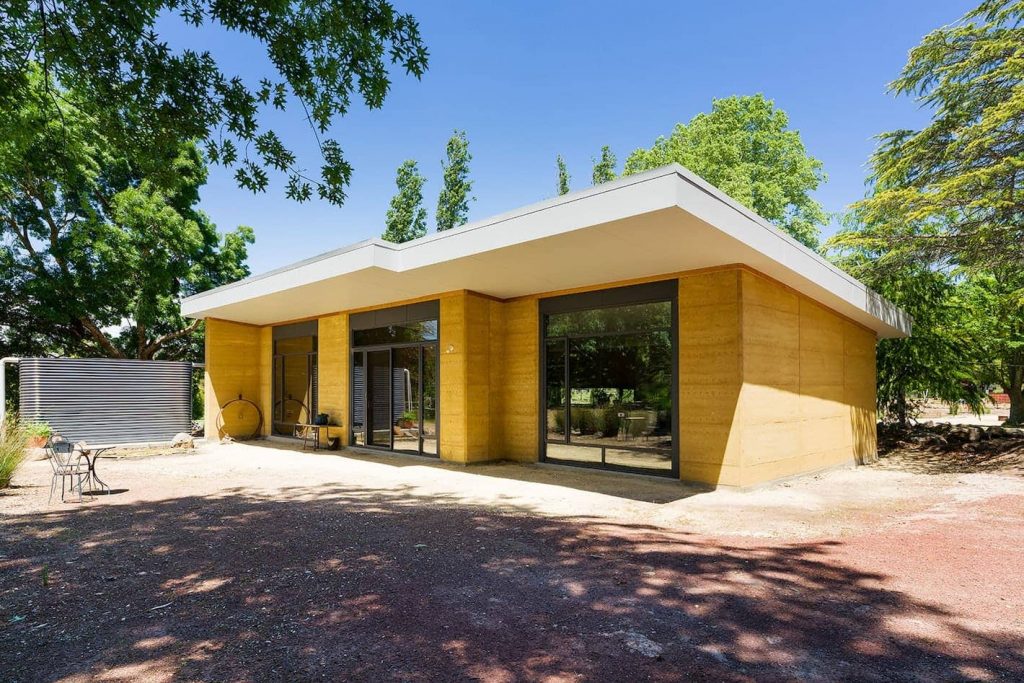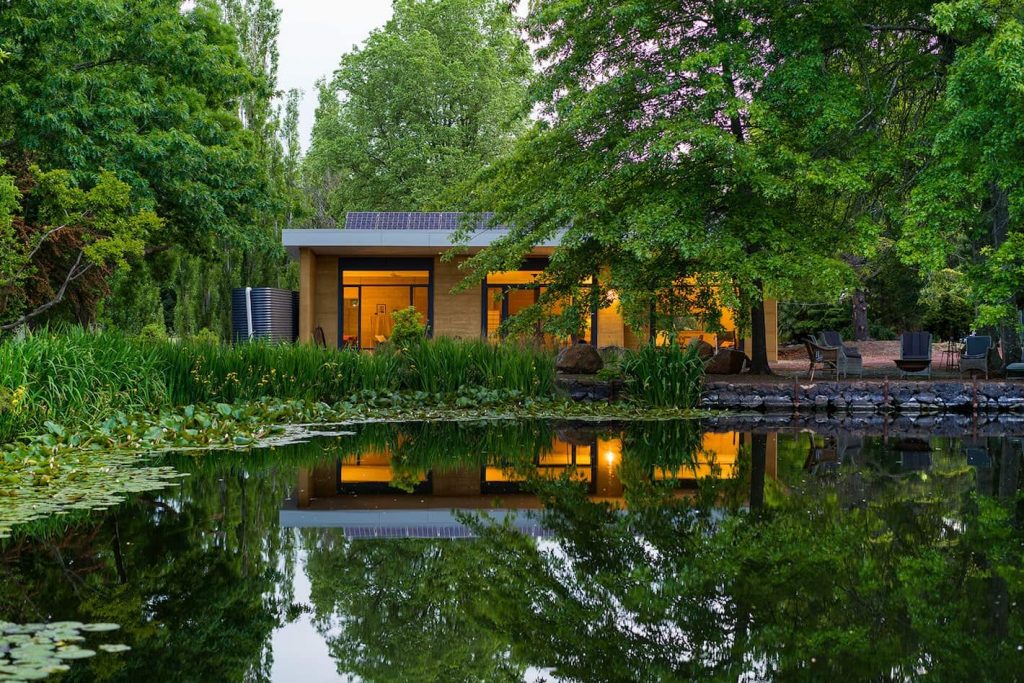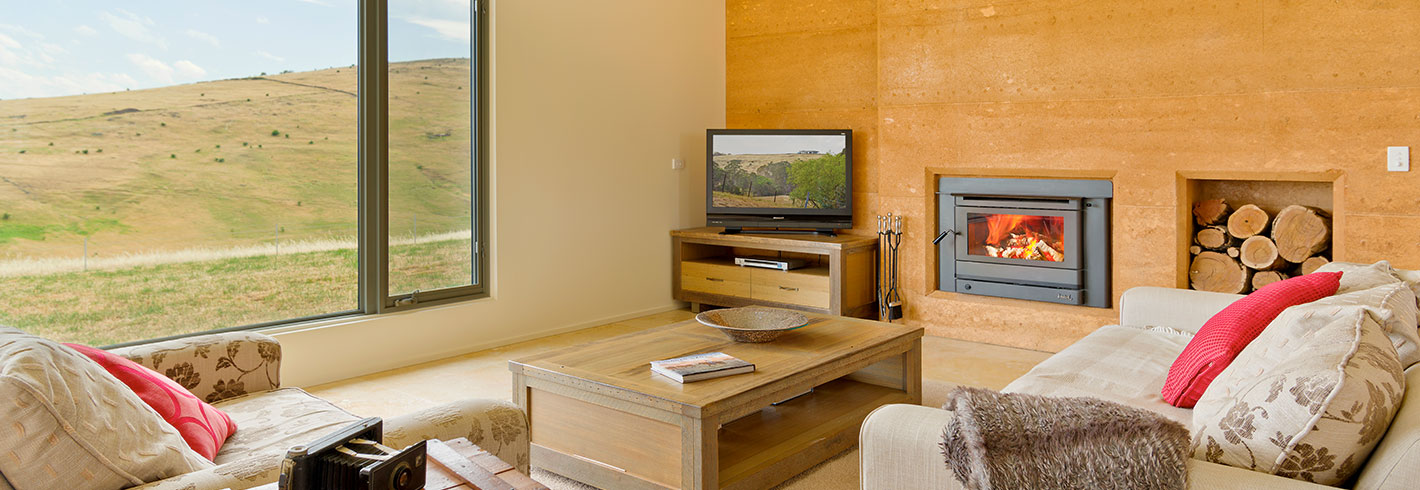Ideal materials for thermal mass are those materials that have both a high density and a high specific heat capacity. Although all materials have some thermal mass – even air, the amount they have varies greatly, as does their ability to store heat and cool while dissipating these to even out temperatures.
What is Thermal Mass?
Rammed earth is a medium that provides excellent thermal mass due its high density, and the high specific heat capacity of the soil used in its construction. An object’s heat capacity is defined as the ratio of the amount of heat energy transferred to an object and the resulting increase in temperature of the object.
How does it work in Buildings?
The thermal mass is warmed passively by the sun or additionally by internal heating systems during the day.
Thermal energy stored in the mass is then released back into the interior during the night.
It is essential that it be used in conjunction with the standard principles of passive solar design.
Thermal mass is effective in improving building comfort in any place that experiences temperature fluctuations—both in winter as well as in summer.
When used correctly, and combined with passive solar design, thermal mass will play an important role in major reductions to energy usage and creating a comfortable living environment all year round.
Thermal Mass in Summer

With correct eave overhang on the North of your building and thermal mass being shielded from direct solar gain we can control the increase in the ambient air temperature of the building.
During the day heat gains from external temperature, the occupants of the building, and any electrical lighting and equipment, is absorbed by the exposed thermal mass of the building and releases stored cool within the thermal mass, thus limiting the temperature rise within the space to be within acceptable levels for human thermal comfort.
By the end of the day the thermal mass of the building has in turn warmed up, and now as external temperatures reduce the heat can be released and the thermal mass cooled down ready for the start of the next day.
However this “regeneration” process is only effective if the building is ventilated at night when the external air temperature has dropped below the internal temperature, to carry away the heat that has been absorbed during the day.
This can be achieved through naturally ventilating buildings (opening windows etc.) or the use of automated ventilation systems.
This reduces or totally eliminates the need for artificial cooling systems to be installed, thus reducing the overall energy consumption of the building to attain a comfortable living environment.
Thermal Mass in Winter

During the winter months, with the correct eaves overhang on the North of your building, the ingress of sun into the building is desirable as it heats the thermal mass that is within the structure.
Over the period of the day, any direct sunlight on thermal mass will be stored within it, as well as warmth absorbed from the increase in the ambient air temperature through natural (passive gain) or artificial means.
By the end of the day when the external air temperature begins to decrease, the stored warmth within the thermal mass of the building is slowly released helping to keep the building and occupants warm.
This reduces the amount or need to artificially heat the building.
The use of Thermal Mass and good Solar Passive Design is beneficial in both saving the occupants money in reduced energy consumption as well as reducing the drain on natural resources used to generate electricity far better for our environment.
Insulation and Rammed Earth Walls
There is much misconception around insulation and Rammed earth walls.
There are those who believe you must insulate Rammed Earth walls in order to get a building permit, and therefore be able to build your Rammed Earth Home. This is not correct.
We welcome the opportunity to explain to you and/or your designer/architect the benefits of utilising un-insulated Rammed Earth walls in your design and how this is done meeting the BCA requirements.
Call or email so we can call and discuss this further.
< Technical | Benefits >

